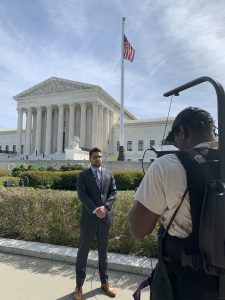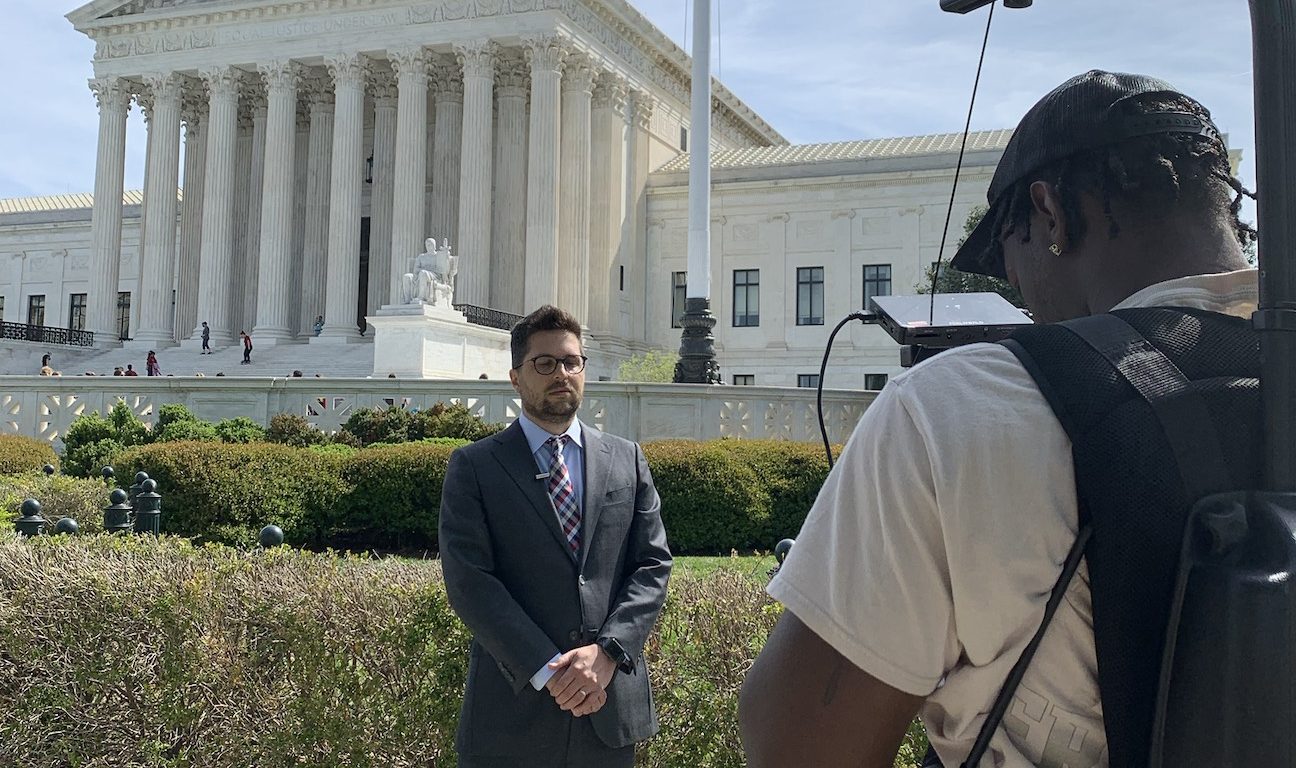Small Details, Sizable Impact
It was late into the night and several hours into overtime. I was running on adrenaline, a second cup of steaming coffee, and the hefty pressure of a deadline that was now right around the corner.
The anniversary of the January 6 Capitol riots were only a few days away, and I was given the task of producing a mini-documentary. The documentary would guide the viewer through the unprecedented events of that day, while chronicling on-the-ground experiences of fellow journalists at The Hill. The assignment felt herculean. As a video journalist in my first big-girl job, I did not want to mess up.
I was trained as a video producer to look at things from a bird’s-eye perspective. To tell a story from a national lens and package it into a piece that is accurate, digestible, and engaging. I had to consider small, but important details in producing any video for The Hill – and many of them involve intellectual property.
For instance, in producing the January 6 video, I asked myself: Were the photos appropriately attributed to the Associated Press and Getty? Both companies produce and distribute media content including photographs and videos for use in newsrooms around the country. Were we absolutely sure that we had permission to use the music? The footage? Does this photograph have special use restrictions? Though seemingly small, these IP-related details had a sizable impact (and sizable consequences if we didn’t adhere to them).
Keeping these principles in mind, we produced a final product that was both compelling and legally sound.
Now as a journalist-turned-law student, I realize that my journalism work and the world of IP mingled in ways that I wasn’t fully conscious of at the time. I knew IP existed, but I wasn’t aware of how expansive the field was. It’s more than just making sure that photos are attributed properly. It goes beyond being allowed to use a sound effect because it was in the public domain.

A Whole New World
When I got to Chicago and started my 1L year at Loyola University Chicago School of Law, I was genuinely overwhelmed by all the opportunities. There were fields I didn’t even know existed. The networking events, panels, and coffee talks all seemed so fascinating, but where could I fit in?
When the anxiety crept dangerously close to a boiling point, I turned to Loyola’s Student Bar Association. First order of business: find a mentor. In a stroke of luck, I was paired with a student mentor who works in IP full-time!
Second order of business: Meet my SBA mentor, Michal, over bubble tea to talk IP, law school, and life. Just a few days prior, I had attended an informational session hosted by Loyola’s IP Law Society (IPLS) and was excited to pick his brain about what I had learned.
With his background in engineering and current work as a patent agent and IP manager at a global consulting firm, Michal gave me some concrete examples of what “working in IP” could look like. From protecting a company’s trade secrets to learning about how a patent could improve a machine, careers in IP just seemed so interesting. I was hooked. I needed to learn more about this area of the law – a field that was both abstract and tangible, both creative and technical.
Michal explained that IP was, in a nutshell, a field that involved ideas.
That really struck me. I started reflecting on the ways that IP law protected photojournalists’ ideas and their work products. The meticulous protocols we had at The Hill held a lot more gravity than I thought. For example, multiple rounds of edits ensured that attribution for IP was checked and that we were using content for which we had permission. We also had an established system for properly attributing any media that was not produced by Hill photographers. In essence, rigorous editing is vital to ensuring that the final product – protected by copyright and IP – is as valuable as possible.
I had initially thought much of IP involved hard sciences, in which I had no background. But by talking with Michal and later getting paired with my IPLS mentor, Maddie, I quickly realized I was mistaken. There was a lot of room within IP for people like me with a more creative background.

The diversity of the field was emphasized even more at a 1L Reception held by Banner Witcoff, a Chicago IP firm. There, I met someone working with Nike products and another attorney who focused on patent prosecution (the process of obtaining a patent).
At Loyola, there are several opportunities to explore the diversity of the field in a classroom setting. Next year, I hope to take Professor Cynthia Ho’s Global Access to Medicine course which dives into how IP plays a huge role in international health and medicine. All in all, the possibilities of a career in IP felt vast.
In the past few months of attending IP forums and networking events, I’ve been able to reflect on just how much content I’ve produced and consumed that holds ties to the world of IP. From the books that I’ve lost sleep over to the podcasts that I religiously listen to, IP touches and protects a myriad of works that have been the source of entertainment, education, and joy for so many people.
I still have a long way to go in my legal career, and a handful of semesters to figure out what I truly want to do with my degree. Whatever I decide to do after graduation, I know that IP isn’t going anywhere – and I’m so excited to continue experiencing its vastness and diversity.

Maris Medina
Assistant Blogger
Loyola University Chicago School of Law, JD 2025
